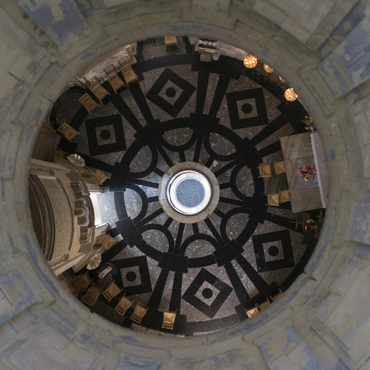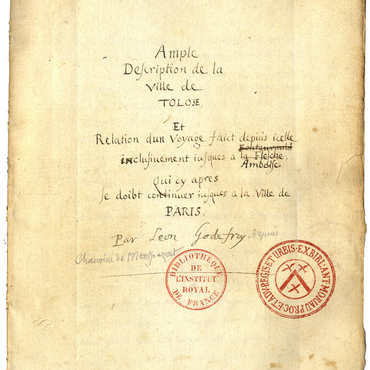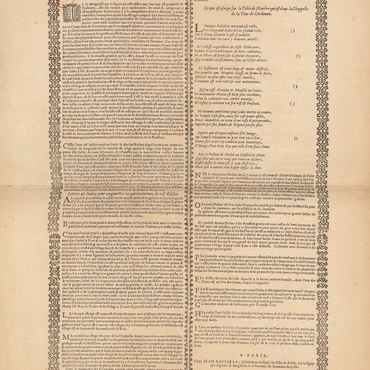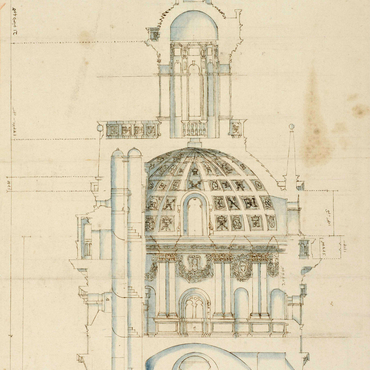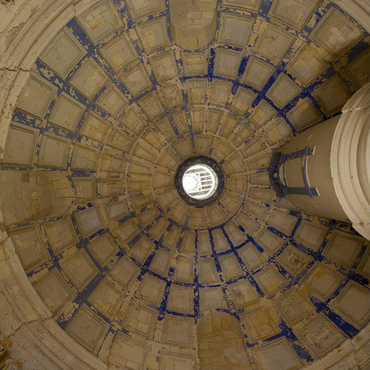
- Home
- A Renaissance monument
- A royal tower
- The royal chapel and its symbolism
Its size and construction – with its extraordinary coffered dome – as well as its symbolism make the chapel the central space in Louis de Foix's tower. It should be seen within the context of the second project that the architect proposed to Henri IV in 1594: as a decisive argument for obtaining the ruler's consent, at a time when his legitimacy was still a very fragile affair. The monumental chapel was designed to be a celebration of the monarchy, and more specifically as a glorification of the tower's two royal founders: the martyred Henri III and, above all, the recently-converted Henri IV, who needed to furnish proof that he was a good Catholic. Within the context of the Wars of Religion, the chapel's central position thus takes on a very political meaning, acting as an instrument to the glory of the monarchy. Based on this, Louis de Foix designed a chapel whose size and décor are astonishing, given that the monument in question was originally a fire tower. The major element is the massive coffered dome overhead, a high-quality architectural element in the tradition of Renaissance monuments: "a magnificent vault of exquisite stone", in the words of Chastillon. At its peak is a oculus providing a glimpseof a fleur-de-lis crown on the upper floor – a "bold and skilful architectural piece" and another symbol celebrating the monarchy. The décor of the chapel itself is dense and meticulous, and mostly pays homage to the two kings (monograms of both Henris). The bust of de Foix and the lengthy inscription praising his qualities are another central element. The religious aspect is, paradoxically, discreet and modest, with an altar that was described by the traveller Godefroy as "not completely thought out". Services were held infrequently. Starting in the nineteenth century and continuing today, the religious life of the chapel flourished, somewhat belatedly, given the stained glass, the masses and the pilgrimages from Notre-Dame de Cordouan.
